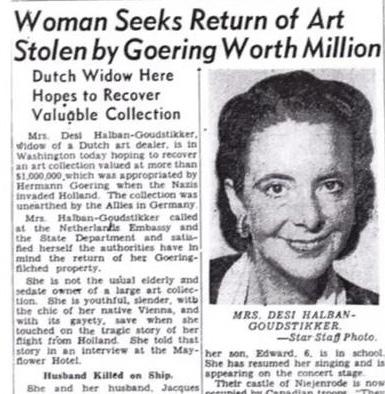Human Beings and Books Were Not Valuable
M
y child is named for two of my great-uncles. One is my mother’s uncle, a kind man who showered his siblings’ children and grandchildren with love. When I had chicken pox at the age of five, he came to our house, and I had to stay at the top of the stairs because he had never had chicken pox. I cried because I couldn’t hug him. The other is my father’s uncle, who was murdered in June 1941 on the sidewalk in front of his house in Yurburg, Lithuania. I know almost nothing about him. His name was Jacob. It is a strange experience to stand in front of that small green house, to ask a Lithuanian historian generously taking the day to walk you around, “Is this where they killed Jacob?” Then we walked a few blocks to a small yellow house, my great-grandmother’s house, Frieda’s house, MELINDA J. where my MENZER grandfather, Israel, grew up. Her other son Jacob was nicknamed Yankel. He had a wife and a small child, but I don’t know the names of either one. At the beginning of June 1941, there were 15,000 people in Yurburg. At the beginning of October, there were 13,000. On October 6, 1941, the mayor of the city wrote to the record office in Kaunas, the second largest city in Lithuania, to report that the 2000 Jews of the town had been successfully eliminated. There had been two Jewish elementary schools and a high school. There had been a kosher butcher and a synagogue. When we stood in front of the little green house in 2003, there was an empty lot beside it where the synagogue had been. The townspeople burned it down. They stole whatever they thought was valuable. They destroyed the books. The human beings and the books — they were not valuable. The historian told us, as we stood in the street, that when the Einsatzgruppe, the mobile death squad, invaded in June of 1941, they handed
out weapons and whisky to the non-Jewish people of Yurburg. They told them that the Jews were in league with the Soviets, who had been controlling Lithuania since 1939. They told them that the Jews were responsible for their suffering. And those people took the weapons and the whisky, and they killed their Jewish neighbors. The young men were murdered first, in two massacres away from the center of town. Then there was a pause. The women, children, and a few older men were kept in a small ghetto in the town. A person could be forgiven for thinking they were safe; who would murder women and children? But at the end of July, the Jews were brought to
Top left: my great-uncle Jacob’s house in Yurburg, Lithuania. Above: the graveyard in Yurburg where my great-grandfather is buried. He was the last Jew to die before the 1941 massacres. Photos by Leon Menzer.
the town library. Lithuanian collaborators removed the bust of Joseph Stalin from display there and made the old Jewish men carry it. They took pictures of other Soviet leaders from the library and made women carry them. Then they forced all of them, the children included, to parade around the town, singing Soviet songs, while townspeople hurled rocks and bottles and screamed “Communist” at them. This farce had one purpose: to identify the Jews with the hated Soviets, to rename and then unname them, to make them enemies. And it worked. A few days later, the elderly women, the children, and the babies were taken to the elementary school, where they were forced to dig their own graves at gunpoint. Then their neighbors shot them. To save on bullets, the murderers killed the babies by smashing their heads into trees and throwing their bodies into the pits. A few days later, the remaining Jews of Yurburg, mostly young women, were taken into the forest and murdered there. Their bodies interned there, their names lost. My great-grandfather has a gravestone. He died before the invasion, the last Jew to die before the murders. What a strange honor: of all your community, to have the last gravestone in an overgrown graveyard. My Hebrew is limited, but
The only photos my father found in his father’s belongings.
18
HOLOCAUST REMEMBERED |
APRIL 27, 2022
|
Supplement created and paid for by the SOUTH CAROLINA COUNCIL ON THE HOLOCAUST
The momument to the mostly young women Jews of Yurburg who were murdered in a forest.
I could read our name in Hebrew letters on the stone: Menzer — mem nun tzadi resh. In the forest outside of town, however, the small monument for the women who were murdered there has no names, just an inscription in Yiddish: “In this place the Nazis and their collaborators destroyed the lives of five hundred Jews in a terrible way. Sept. 8, 1941.” Five hundred nameless Jews, and yet everyone who died there, and everyone who was murdered in the Holocaust, was a real person, an individual as real as a beloved uncle, as real as a child crying at the top of the stairs. It is our responsibility to remember them all, those whose names we know, those whose names are lost to us. ■ Dr. Melinda J. Menzer is a professor of English at Furman University in Greenville. Granddaughter of a Holocaust survivor.




















